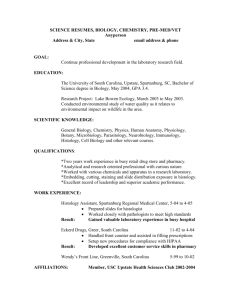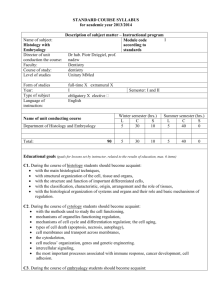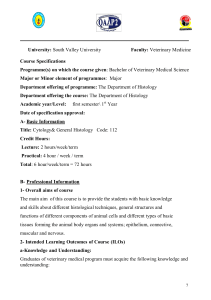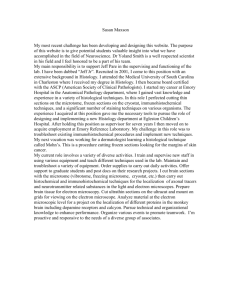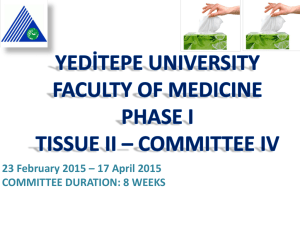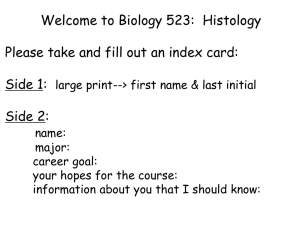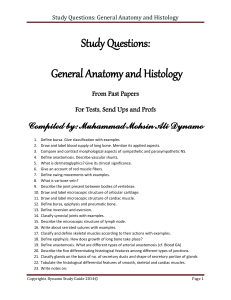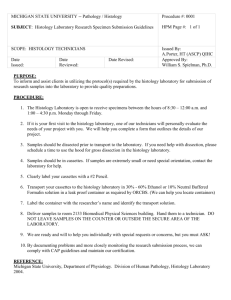Pharos University Quality Assurance Center University/Academy
advertisement
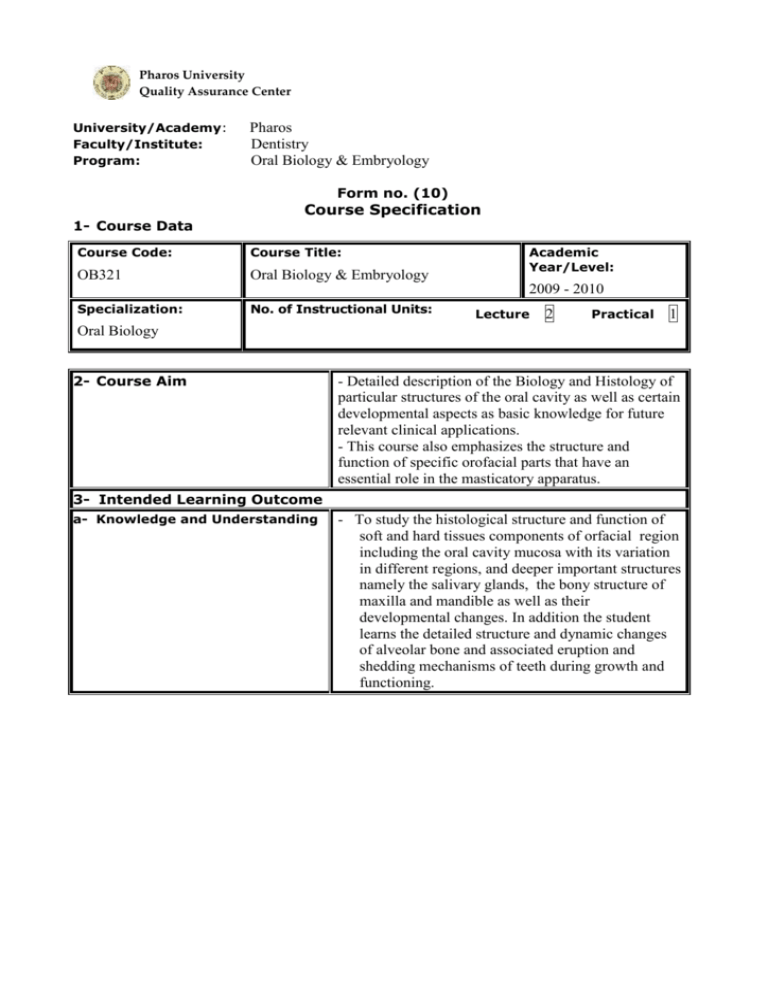
Pharos University Quality Assurance Center University/Academy: Faculty/Institute: Program: Pharos Dentistry Oral Biology & Embryology Form no. (10) 1- Course Data Course Specification Course Code: Course Title: OB321 Oral Biology & Embryology Academic Year/Level: 2009 - 2010 Specialization: No. of Instructional Units: Lecture 2 Practical 1 Oral Biology 2- Course Aim - Detailed description of the Biology and Histology of particular structures of the oral cavity as well as certain developmental aspects as basic knowledge for future relevant clinical applications. - This course also emphasizes the structure and function of specific orofacial parts that have an essential role in the masticatory apparatus. 3- Intended Learning Outcome a- Knowledge and Understanding - To study the histological structure and function of soft and hard tissues components of orfacial region including the oral cavity mucosa with its variation in different regions, and deeper important structures namely the salivary glands, the bony structure of maxilla and mandible as well as their developmental changes. In addition the student learns the detailed structure and dynamic changes of alveolar bone and associated eruption and shedding mechanisms of teeth during growth and functioning. b- Intellectual Skills c- Professional Skills d- General Skills 4- Course Content - To teach the students the concept of relating the structures anatomy and histology to its role in masticatory apparatus. - To learn and understand the basic normal structure of orofacial tissues as an essential step for future studying of the pathological changes of the same tissues. - To develop the basic scientific knowledge of the student required to understand it’s significance in clinical applications. - To build up practical diagnostic skills during laboratory sessions concerning the microscopic study of histological sections of structures taught during theoretical sessions. - One of the main important objectives of biological studies is to build up the basic scientific knowledge of students particularly those interested in future advanced studies and research carrier, and to develop special skills necessary for such students through the microscopic investigations of different tissues during practical training sessions as an essential tool for future researchers. - Bone structure - Alveolar bone structure and function - Oral mucosa structure and function in different parts of the oral cavity - Salivary glands - Eruption and shedding mechanisms - Temporomandibular joint. - Maxillary sinus. - Growth of maxilla & mandible. 5- Teaching and Learning Methods 1- Using illustrative power point presentations in lecture sessions. 2- Using histological sections during laboratory sessions for microscopic examination of different tissue parts of the masticatory apparatus. 3- The student learns to draw the histological sections for better studying and understanding. 4- Using artificial and natural models for better illustration of specific orofacial parts. 6- Teaching and Learning Methods for Students with Special Needs Concerning the students registered for the faculty of Dentistry, we strongly recommend that they should first go through full health examination before their admission, as accepted students of special needs in such profession should be very limited to specific health problems that would not interfere with the benefits of the patients. 7- Student Assessment: a- Procedures used: 1- Short questions quiz to assess knowledge and understanding of specific scientific points. 2- Midterm exam of question types including MCQ, short and comprehensive question Comprehensive exam. To assess the level of understanding of the scientific material as well as the capability of the student to express such knowledge in a report like form. 3- Laboratory spotting exam to identify microscopically histological sections. 4- Find oral exam when external examiners are invited to participate> 5- Team work seminars presented orally by the students using data show tools. 6- Drawing book requirement from the students on tissue sections taught during the course. b- Schedule: - Week 7 (quiz) - Week 11 (mid-term exam, written, practical) - Week 15 (final exam, written, practical) Quiz exam 10% Midterm exam 20% Participation 20% Final exam 50% (10% oral 35% written 5% practical) Total 100% c- Weighing of Assessment: 8- List of References: a- Course Notes - Drawing notebook for practical sessions. Oral Biology course note of faculty of Dentistry Alexandria university b- Required Books (Textbooks) - Oral Development & Histology. JAMES. K.AVERY (3rd Edition) - Basic Histology Text, atlas. LUIZCARLOS JINQUEIRA JOSE CARNEIRO (International edition) 11th c Recommended Books d- Periodicals, Web Sites, ..., etc. - Oral Histology, Development, Structure and Function. TEN CATE’S (8th edition) - ORBAN'S Oral histology and embryology Edited by S.N. Bhaskar (11th Edition) www.medicine.miowa.edu www.dentistry.ouhse.edu
